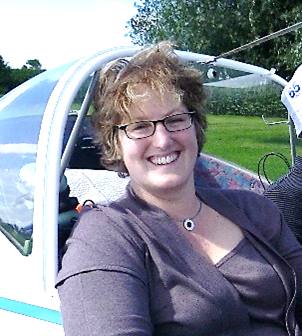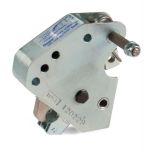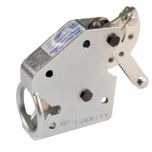Tost Tow Release - TBO & Maintenance

Editors Note: Tost has been manufacturing sailplane tow releases since 1952. Their releases are a worldwide standard known for safe gliding launches. More than 73,000 have been produced. Tost uses only precision components: hook, segment, housing, ring cage, and release lever. We are fortunate to have Susanne Dupont as our guest author. Susanne's grandmother Anneliese co-founded Tost G.M.B.H in 1945. Anneliese started gliding right after WWII in Austria. This newsletter is part one of a two-part series. Part Two - Tost Tow Release Overhaul. Next, get an inside look at the process Tost uses to overhaul each tow release.
You likely have a Tost release in your glider; the nose release is used for aero towing and the center-of-gravity-release for winch launching. Both releases are actuated by the same cable, ending in a yellow knob in the cockpit. When actuating the yellow knob (or handle), you actuate both releases, even you are using only one.
Limited Lifetime
Those releases have a limited lifetime or TBO (Time Between Overhaul). The lifetime limit is 10,000 actuations because of the spring inside of the tow release. How can you calculate those 10,000 actuations? Each launch noted in your aircraft logbook equals approximately 5 actuations. So, this would result in 2,000 launches. In a double seater which is used for training flights calculate 8 actuations per launch, taking into account that the student is still learning and experiencing. This results in 1250 launches for a double-seat sailplane.
How are the actuations of the release for one start calculated? It starts by connecting the glider to the airfield tow vehicle, its disconnecting, the check of free release (1 or 2 times), then connecting of the glider to the towing cable/rope, and of course the release from launch.
It is essential that every pilot knows how often he or she actuates the release. Only then you know how to define the number of launches before overhaul. It is the responsibility of the aircraft owner or pilot to keep a record of the number of launches and calculate when to send the releases to Tost for overhaul.
Exceeding the number of actuations carries a risk of spring breakage, resulting in a malfunctioning of the tow release. You certainly want this release with which you are connected to the tow rope to open when it should – and not to open unpredictably when it should not. The release needs to operate reliably. Once the tow release has reached the limit of actuations it's time for overhaul, In North America send your release to Wings & Wheels. They stock many new and newly overhauled tow releases for immediate replacement. In Europe send it for an overhaul to the Tost works in Munich, Germany.
Maintaining Your Tow Release
Check regularly the correct function of the release. All parts must move free. Without tension applied, the hook must close completely. Clean the release if it is polluted with grass or soil. Use lubricants like Boeshield T–9 to service the release.
Don't Use Welded Rings on Tost Tow Releases
Connect Only Tost Double Tow Rings
When aero towing or ground launching always use the stipulated connecting ring pair (Tost Double Tow Rings) according to LN 65091 as connection to the cable or tow rope. When using hardware store welded rings, you can severely damage the release body. This can on one side result in an expensive overhaul with additional spare parts or – on the other side – in a dangerous situation where a welded ring can block and prevent tow release. Using welded tow rings void Tost tow release warranties.

Founded in 1945, Tost holds an LBA approval as Design and Production Organisation (LBA= German Aviation Authorities) since 1969. They produce safety equipment, landing wheels, tow releases, tires, tubes, and disk brakes for gliders.








